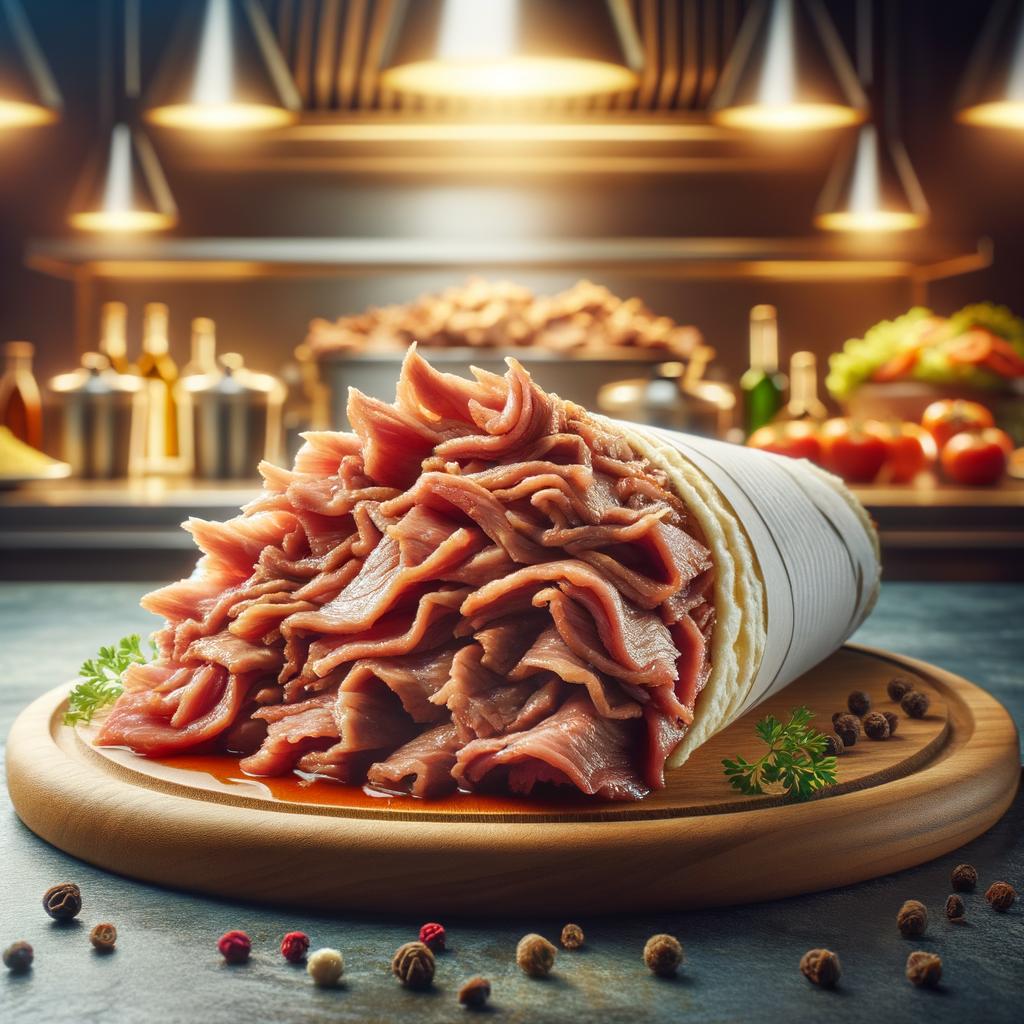Shawarma Meat

Description Shawarma meat is a delectable delight that has its roots in the Middle East. It is typically a mix of chicken, beef, or lamb, marinated in a rich blend of aromatic spices and herbs. The meat is stacked onto a vertical rotisserie, where it slowly roasts and bastes in its own juices. The appearance of shawarma meat is enticing, with a deep, golden-brown exterior that gives way to tender, juicy slices. The flavor profile is a complex tapestry of earthy, spicy, and tangy notes, with hints of garlic, cumin, coriander, and turmeric. One of the unique characteristics of shawarma meat is the way it is cooked, which allows the outer layers to develop a beautiful crust while the interior remains moist and succulent.
Primary Uses Shawarma meat is a versatile ingredient that can be used in a variety of dishes. It is most commonly served in a warm pita bread with a medley of fresh vegetables, pickles, and sauces, creating a satisfying and flavorful sandwich. It is also a key component in many Middle Eastern dishes, such as shawarma platters, salads, and rice bowls. Beyond its culinary uses, shawarma meat has a cultural significance in many Middle Eastern cultures, often being the centerpiece of family gatherings and celebrations.
History The history of shawarma meat is as rich and layered as its flavors. It dates back to the Ottoman Empire, where it was known as "doner kebab". The method of cooking meat on a vertical spit was an ingenious solution to preserving meat in a time before refrigeration. Over time, this method of cooking spread across the Middle East, evolving into what we now know as shawarma. The word "shawarma" itself comes from the Turkish word "çevirme", which means "turning" - a nod to the unique cooking method. This beloved street food has now gained global popularity, with shawarma stands popping up in cities worldwide.
Nutritional Information Shawarma meat is not only delicious but also packed with nutritional benefits. It is a good source of high-quality protein, which is essential for muscle growth and repair. It also contains a range of vitamins and minerals, including iron, zinc, and B-vitamins. However, it's important to note that the nutritional profile can vary depending on the type of meat used and the marinade ingredients. Compared to other types of grilled meats, shawarma meat tends to be lower in fat due to the slow roasting process, which allows excess fat to drip off. Despite its nutritional benefits, moderation is key, as some versions can be high in sodium and saturated fat.

